
Nestled in the Indonesian island of Java, Borobudur Temple is not only a spectacular architectural gem, but also the largest place of worship belonging to one of the world’s greatest religions, Buddhism. Every year, on the full moon of the fourth month of the Buddhist lunar calendar, thousands of devotees congregate at this UNESCO world heritage site in Central Java to celebrate the three most important events in the life of Gautama Buddha - his birth, enlightenment and deathless state. The three events, popularly known as Vesak, are celebrated as an introspection of spirituality and tranquility across Buddhist communities around the world.
The preparations for the festivities begin a few days earlier, with the ritual of water collection from the natural springs of Jumprit, and fire from the natural flames of Mrapen, both in Central Java. The flame and water are kept in Candi Mendut, the oldest Buddhist temple in the region, which dates back to the 9th century AD. The outer walls of the temple are adorned with reliefs of Bodhisattvas and other figures from the Jataka tales. Three huge monolithic statues of Sakyamuni, Avalokitesvara and Maitreya sit in the main sanctum and highlight the spiritual purpose of the establishment of the temple. Vesak day begins with the washing of the statues, followed by prayers to welcome the moment of Vesak – the time when Siddhartha Gautama reached enlightenment. This is followed by rituals, where the members of the congregation provide food for the monks, highlighting the morality of giving, aligned with the teachings of the Buddha.
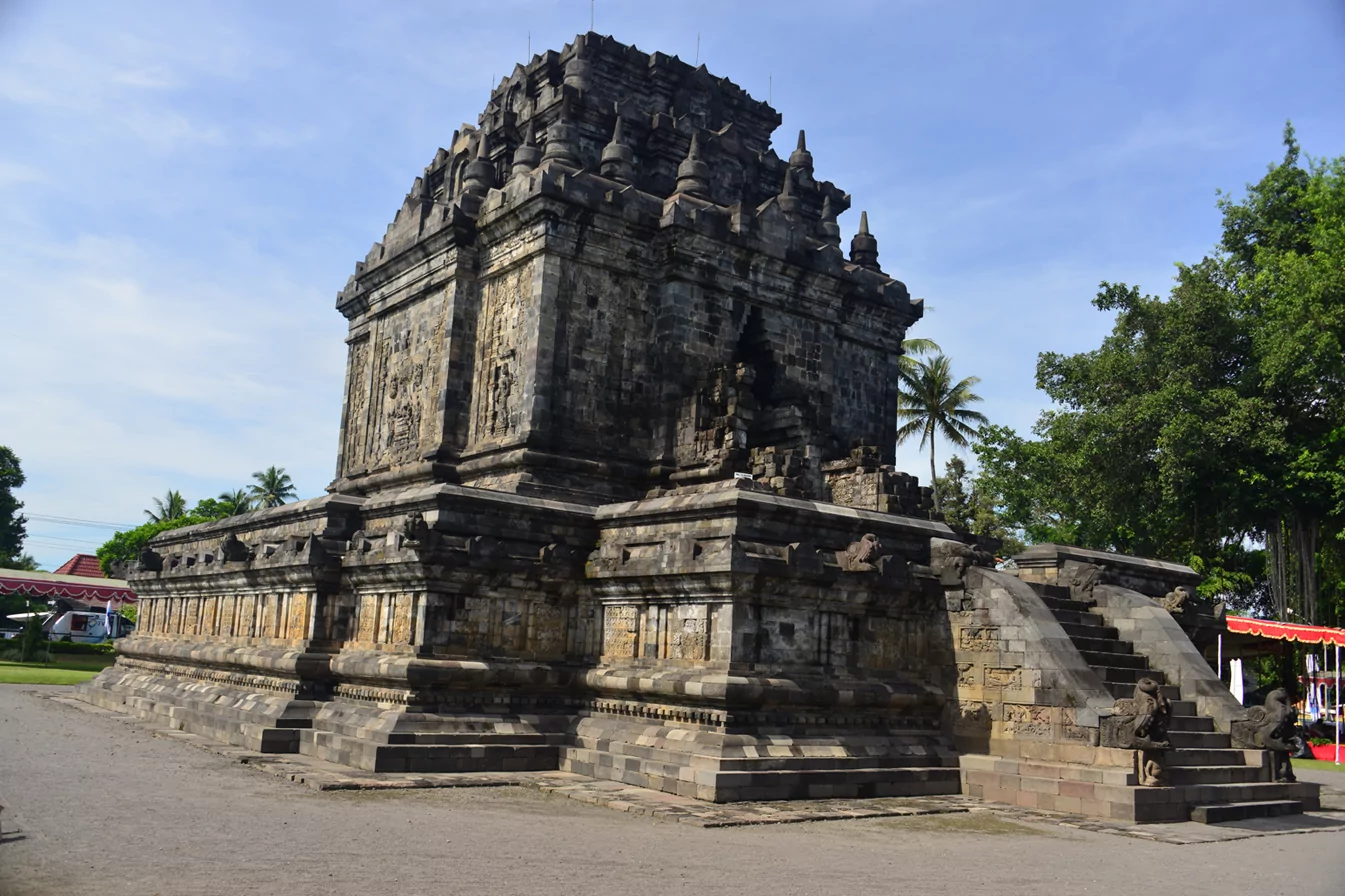
The temple of Candi Mendut
photography by: Shozeb Haider
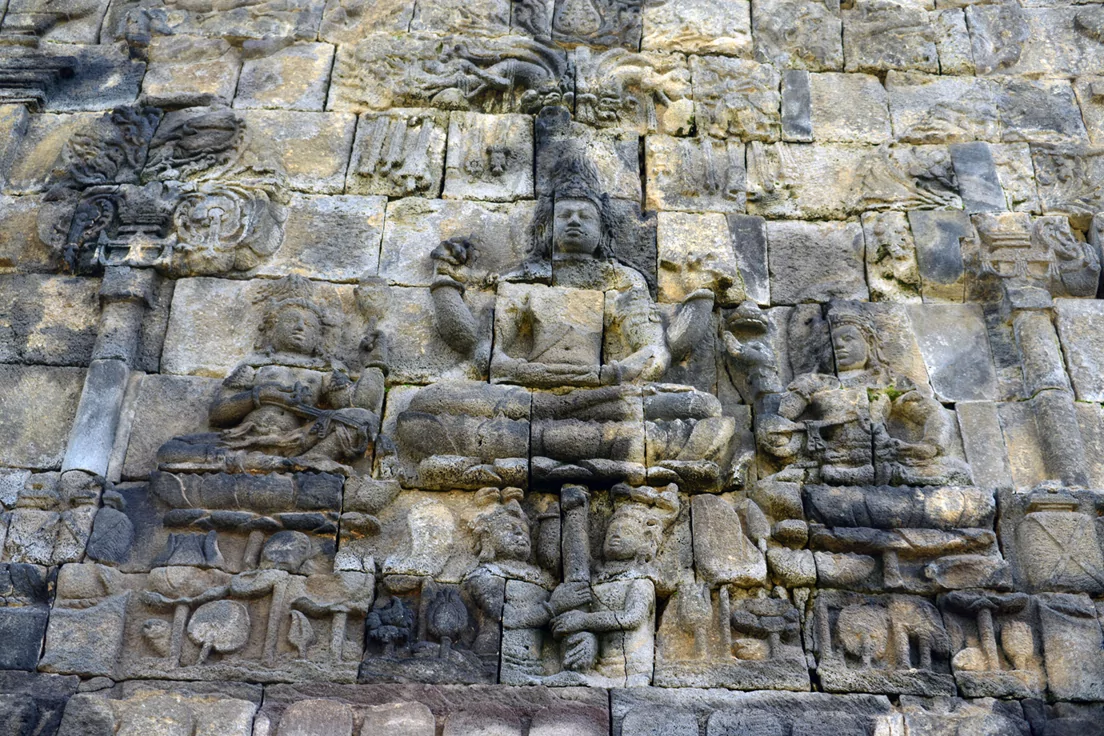
A relief in Candi Mendut
photography by: Shozeb Haider
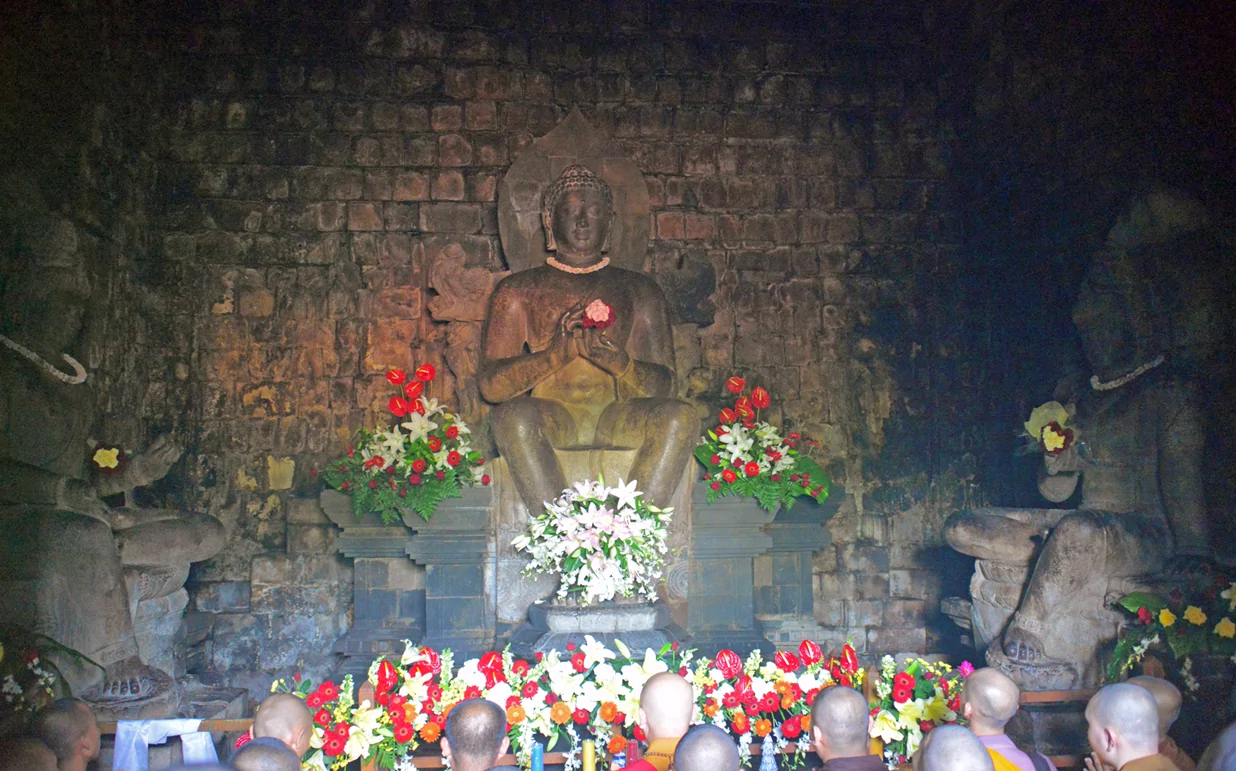
The statues of Sakyamuni, Avalokitesvara and Maitreya in Candi Mendut
photography by: Shozeb Haider
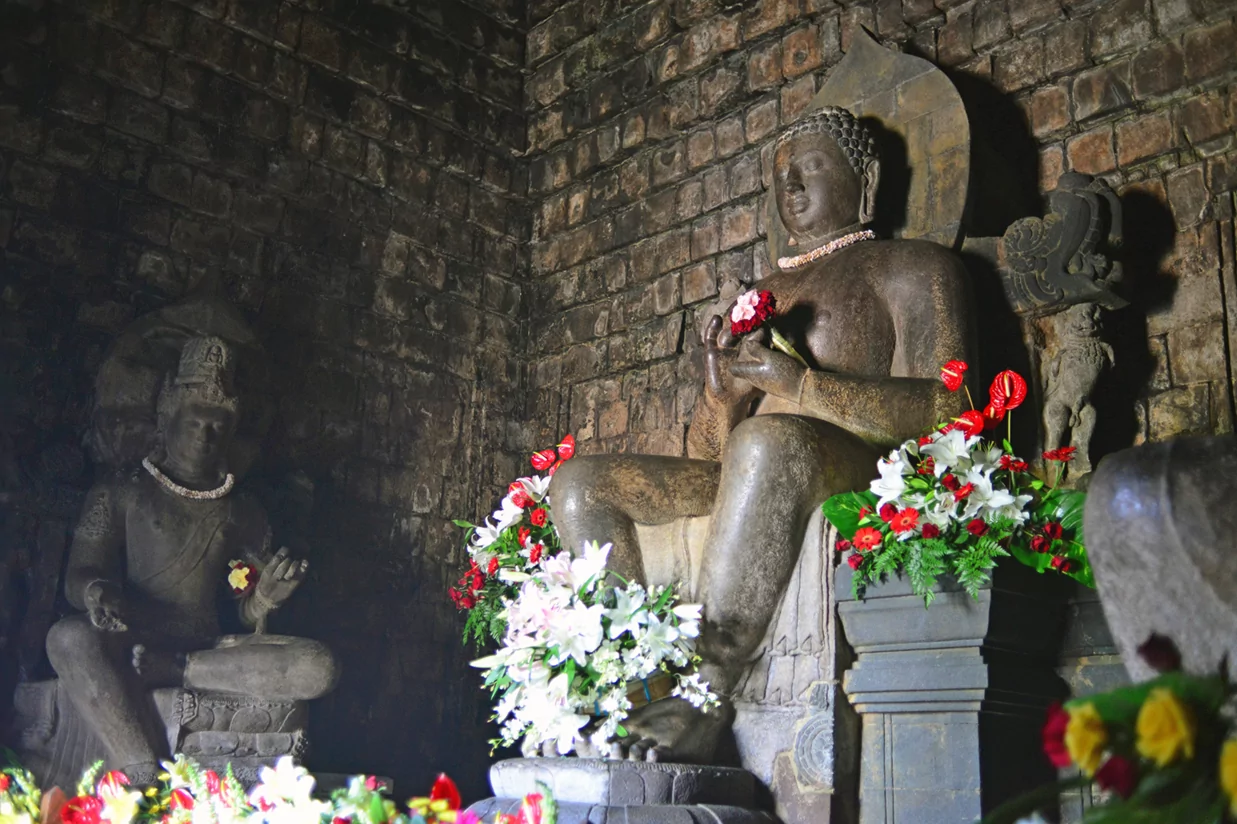
The main sanctum in Candi Mendut
photography by: Shozeb Haider
After the sun crosses its zenith, the monks and the congregation start out on foot for Pawon Temple. At the head of the procession is a marching band, which is followed by young volunteers bearing standards. Large decorated fruits placed on a platform attached to two poles and borne on men’s shoulders are carried as offerings to the enlightened one. Small litters resembling a palanquin carry the Vesak torch, holy water and other Buddhist symbols.

The Vesak celebrations after the sun crosses its zenith
photography by: Shozeb Haider
After crossing the Elo and Progo rivers, the procession regroups briefly at Pawon temple, which literally translates as “a place that contains dust”. The small temple sits on a raised platform, dating back to the same era as Mendut. The central room is empty, with no deity in it. Perhaps there was never meant to be one, and it was built only to house the ashes of the king and the nobles. The outer walls are carved with reliefs of Taras, who symbolize the virtues of success in work and achievements. The roof, crowned with small stupas, is thought to be a fine example of Javanese temple architecture.
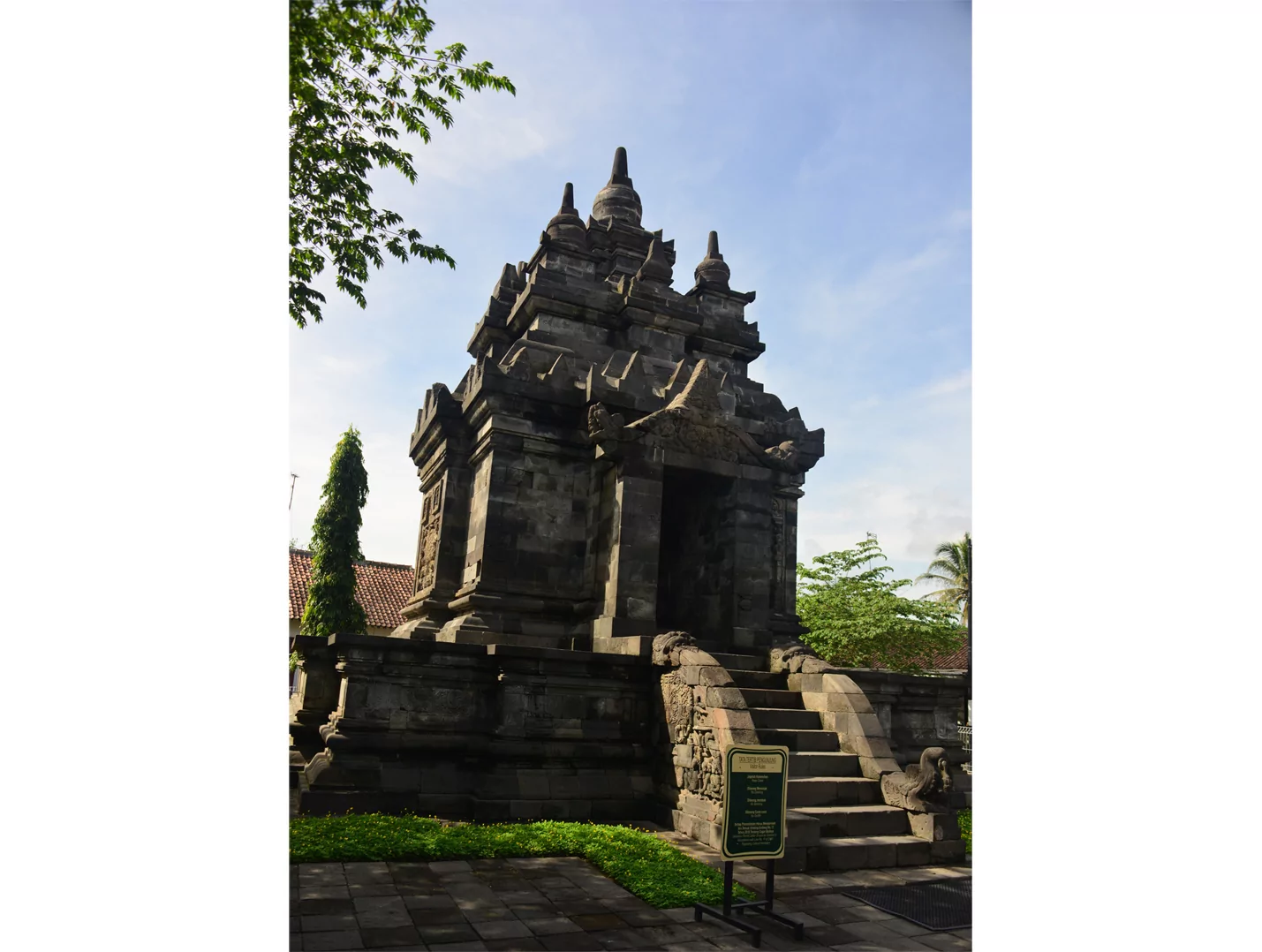
The temple of Pawon
photography by: Shozeb Haider
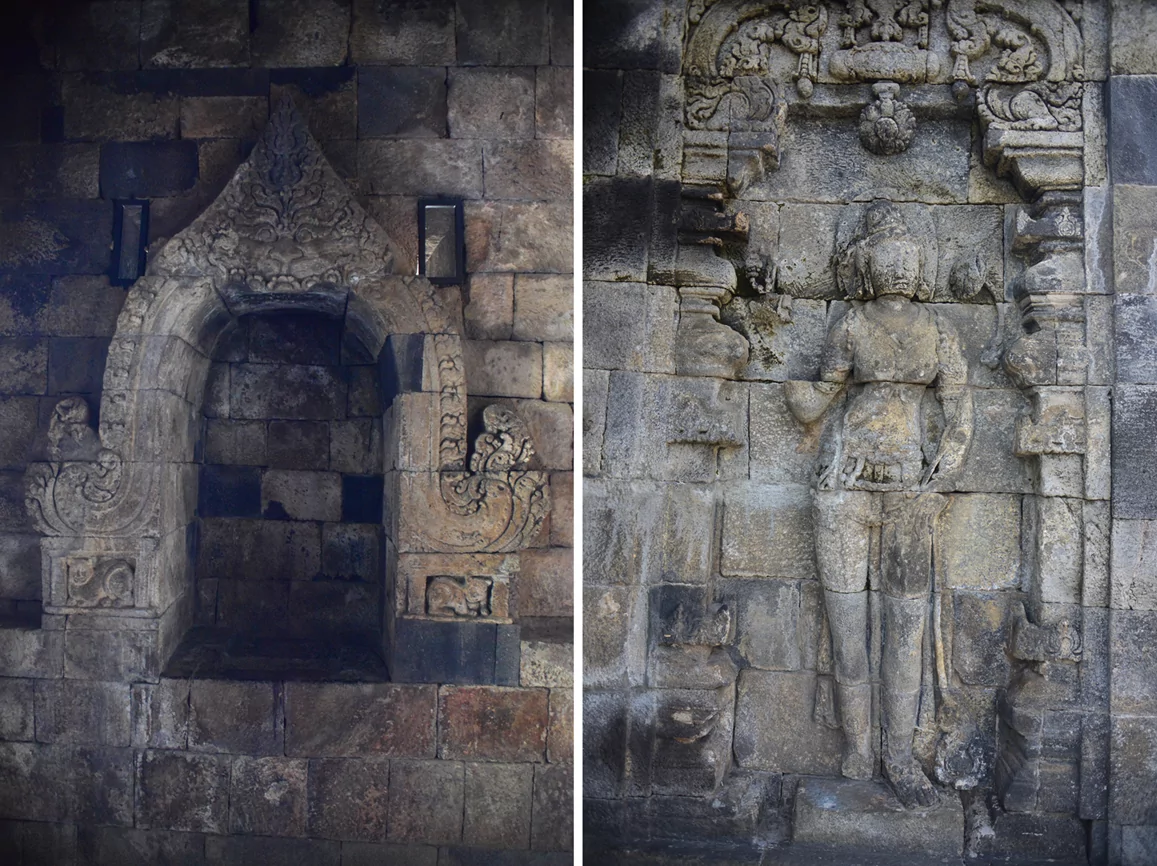
The relief in Pawon Temple
photography by: Shozeb Haider
The head priests sit in a decorated float that houses the Buddhist relics, and sprinkle sacred water into the crowd, to symbolize blessings, that has gathered all along the parade route. Occasionally, flowers are distributed as blessings to pilgrims. Behind the float is the procession of saffron-robed monks and nuns, who have gathered from all over the world. Volunteers carrying brightly colored parasols provide shade to the monks and nuns, while they chant holy verses from the scriptures as they walk. The parade takes over three hours to wind its way through crowds, food and souvenir stalls, from Mendut and Pawon, to reach the focal point of the festival – The temple of Borobudur.

Monks sprinkle sacred water on passersby
photography by: Shozeb Haider
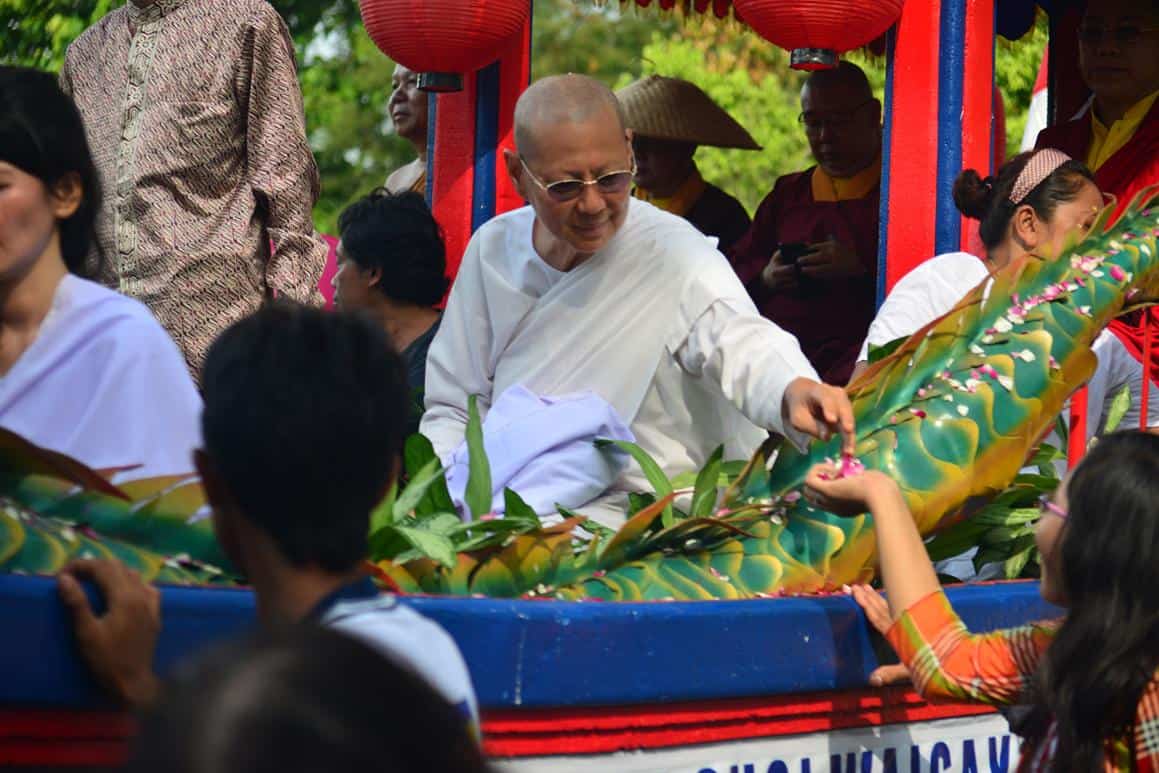
Flowers offerings
photography by: Shozeb Haider

Volunteers protecting monks from the equatorial sun
photography by: Shozeb Haider
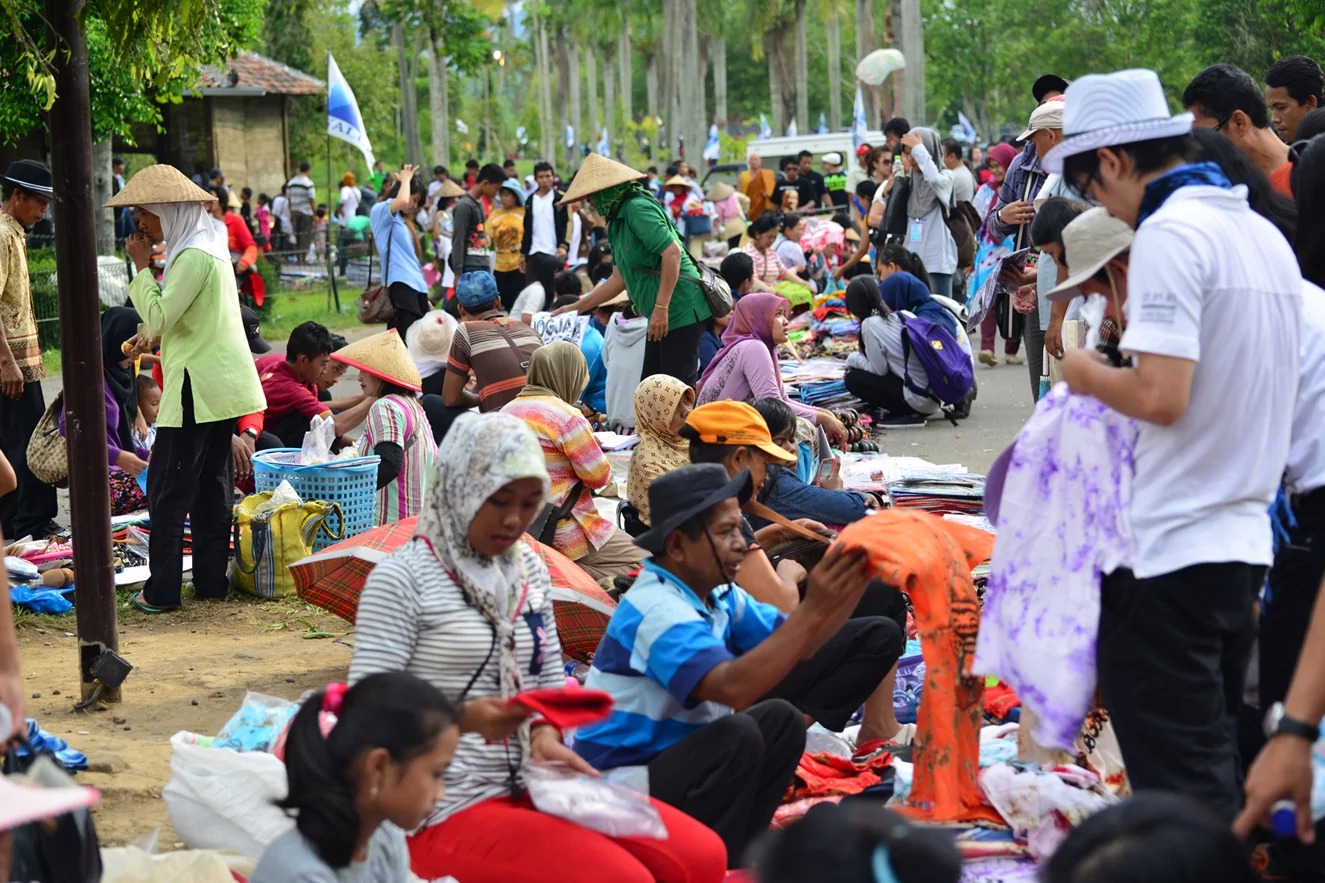
The many stalls around the parade route
photography by: Shozeb Haider
Nestled deep in the jungles of the Kedah valley and in the shadow of Mt. Merapi, the most active volcano in Indonesia, rises a hill on which stands the largest and most splendid Buddhist complex in the world. Borobudur derives its name from sanskrit “vihara Buddha uhr”,or monastery on a hill. The temples of Mendut and Pawon and the complex at Borobudur are located in a straight line on a map, suggesting an implicit symbolic association between these places, the significance of which is now lost to us.

The sunrise over Borobudur Temple
photography by: Shozeb Haider
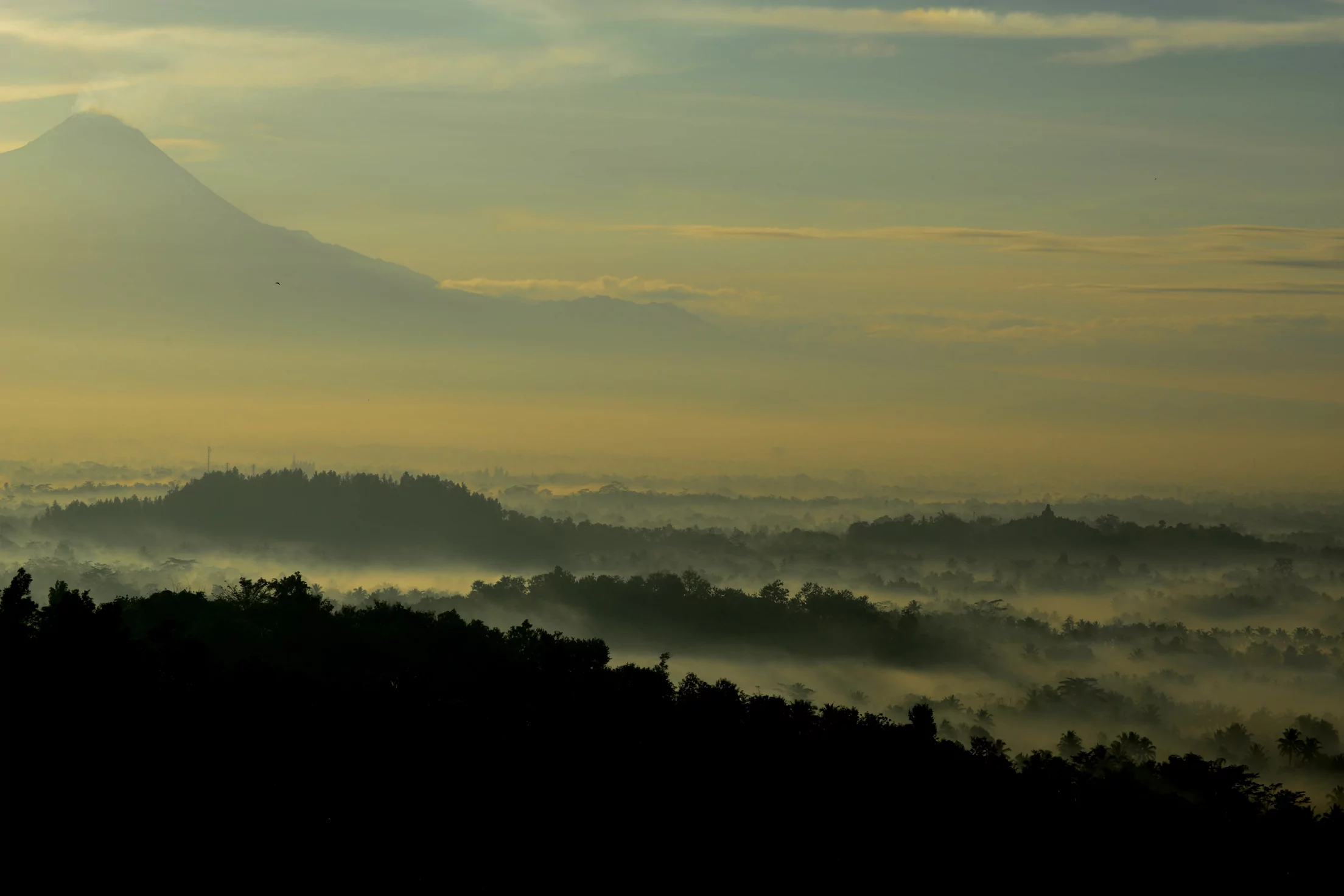
The forested area around Borobudur with Mt. Merapi on the background
photography by: Shozeb Haider
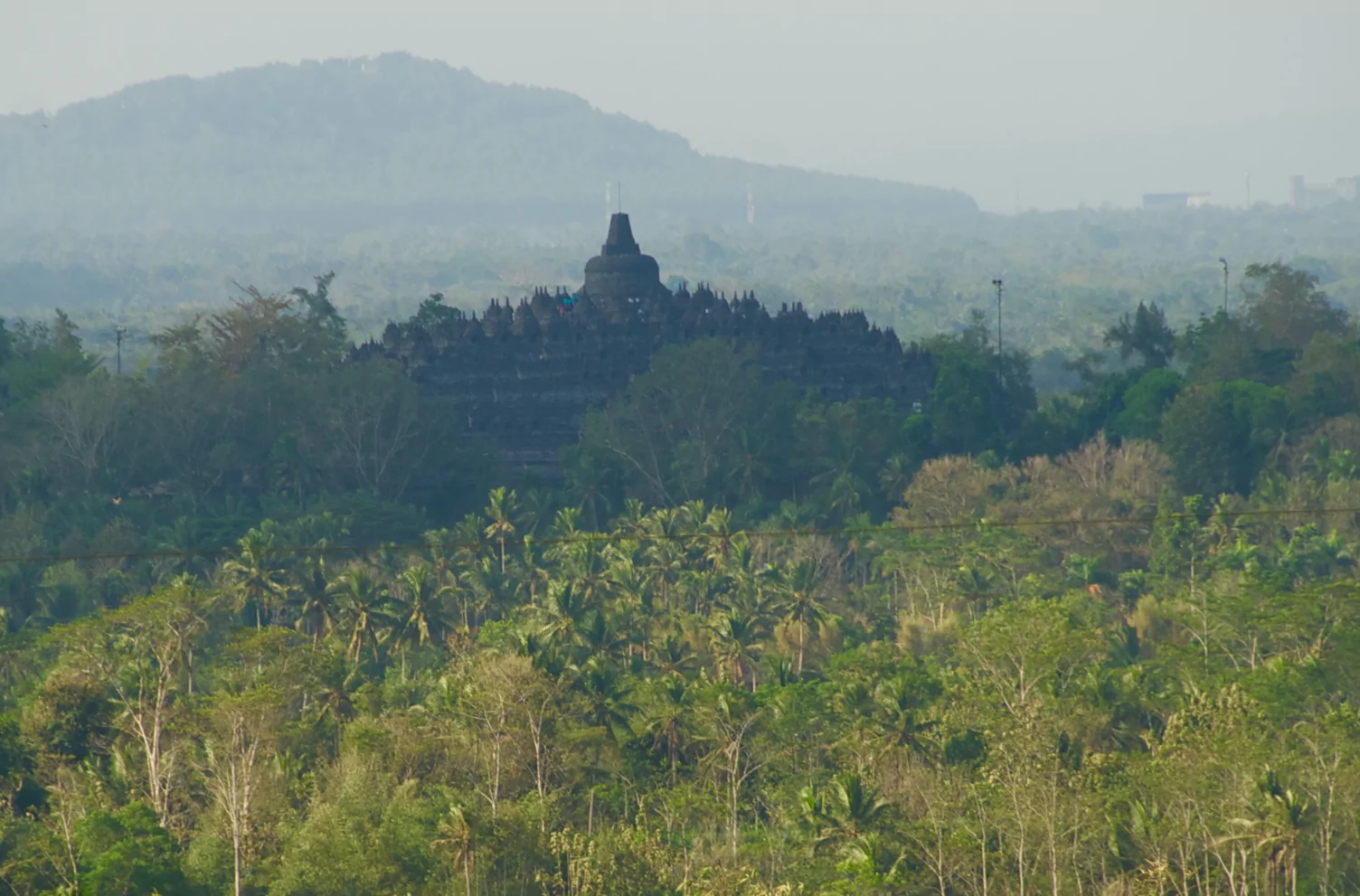
Borobudur Temple jutting out from the rainforest
photography by: Shozeb Haider
Borobudur was completed in 842 AD by Sailendra kings. At some point in time it was abandoned to the perils of nature and lost to the world for well over half a millennium. It was not until 1814 that Sir Thomas Raffles rediscovered the monument, buried under thick undergrowth and volcanic ash from Mt. Merapi. What makes Borobudur so spectacular is not just its immense size but its ability to be a living monument, as its bas reliefs narrate the story of Buddha’s life and the principles of his teachings. In order to understand them, the pilgrim has to walk through the monument.
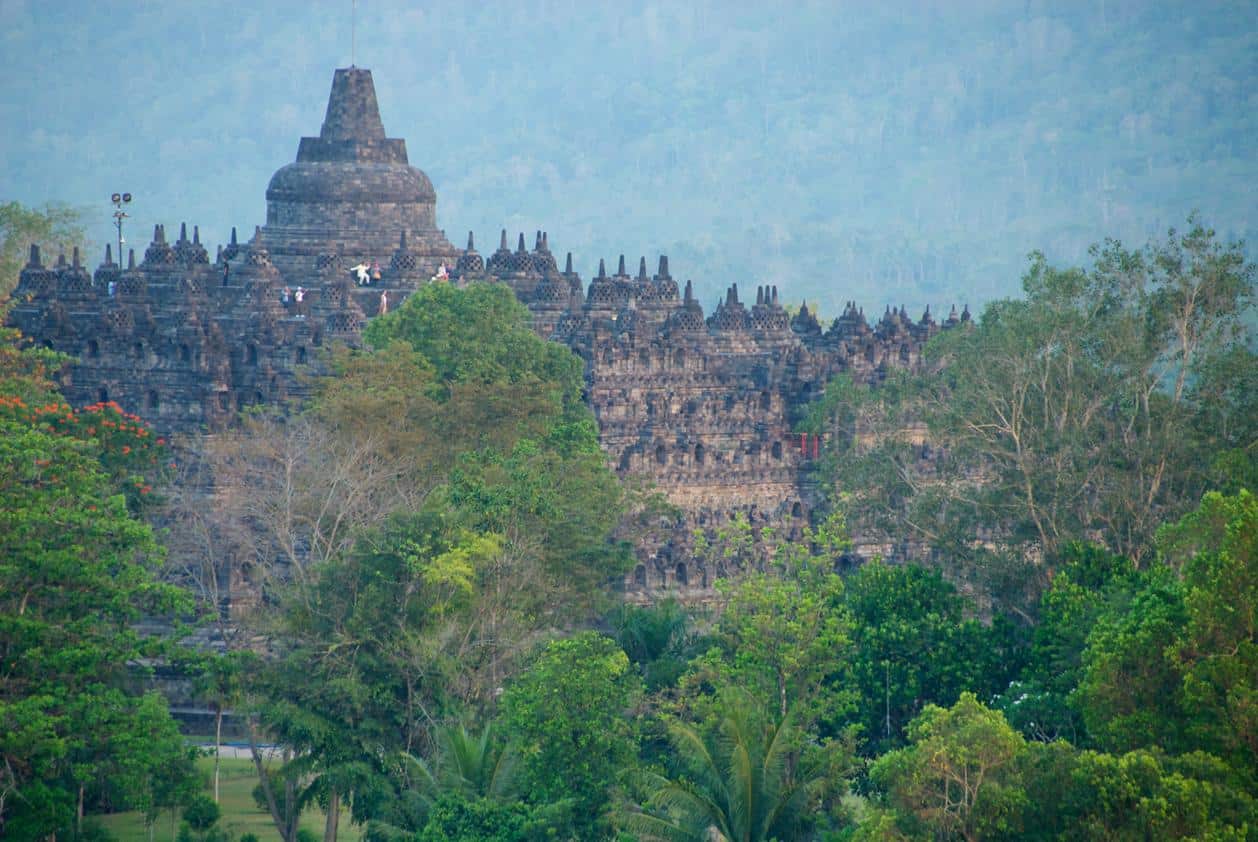
Borobudur Temple at its fullest glory
photography by: Shozeb Haider

Borobudur Temple’s façade
photography by: Shozeb Haider
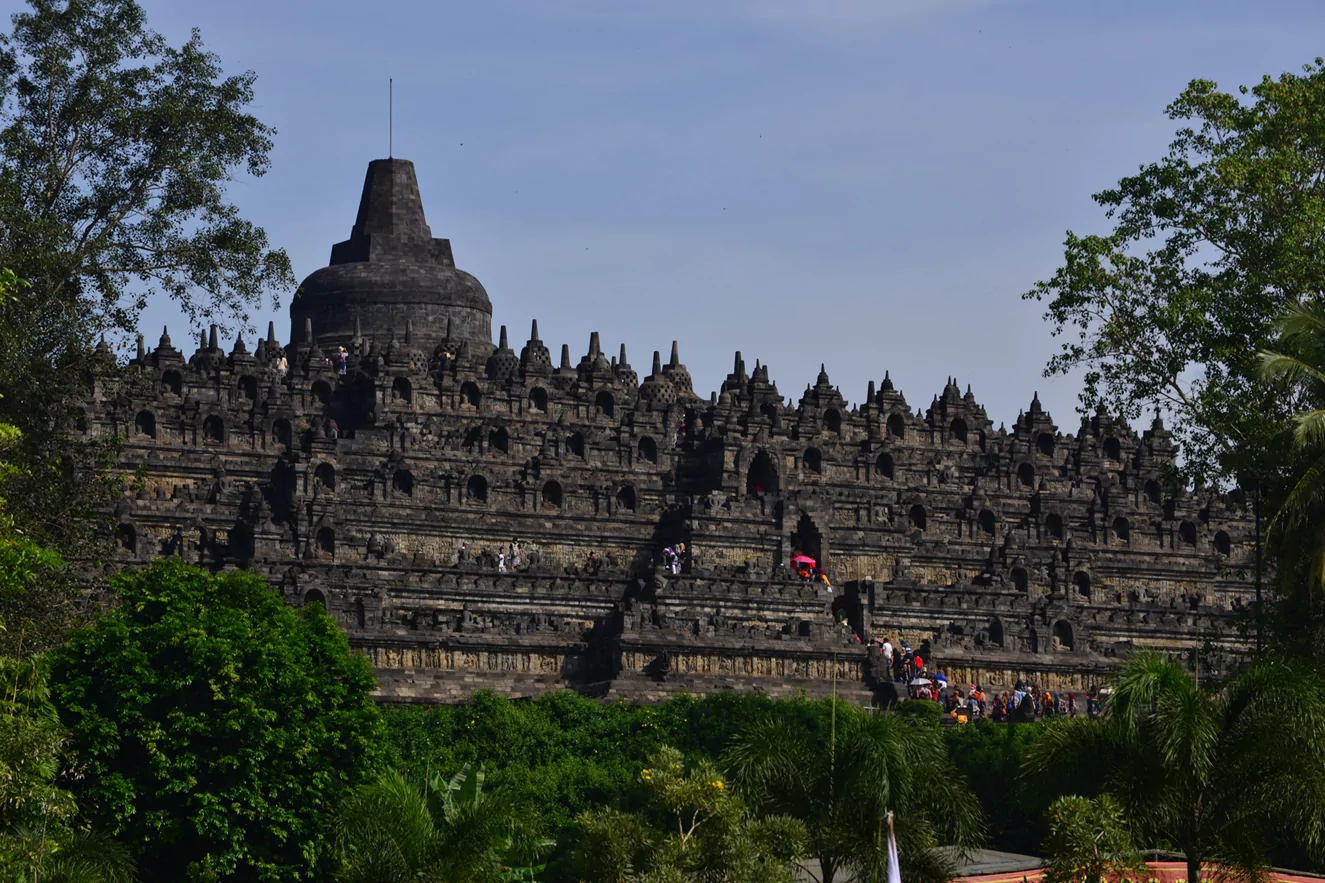
Borobudur’s frontal façade, dominated by the numerous small stupas
photography by: Shozeb Haider
The experience of the physical journey that the pilgrim makes, circumambulating, and ascending slowly from the base to the top of the complex, is a powerful one, and mirrors a spiritual journey that symbolically transports him from our imperfect world, to a higher plane of being. It describes the different levels that must be passed to attain spiritual enlightenment. The magnificence of this process can only be achieved by experiencing and overcoming the complexities of the realms of desire, form and formlessness.
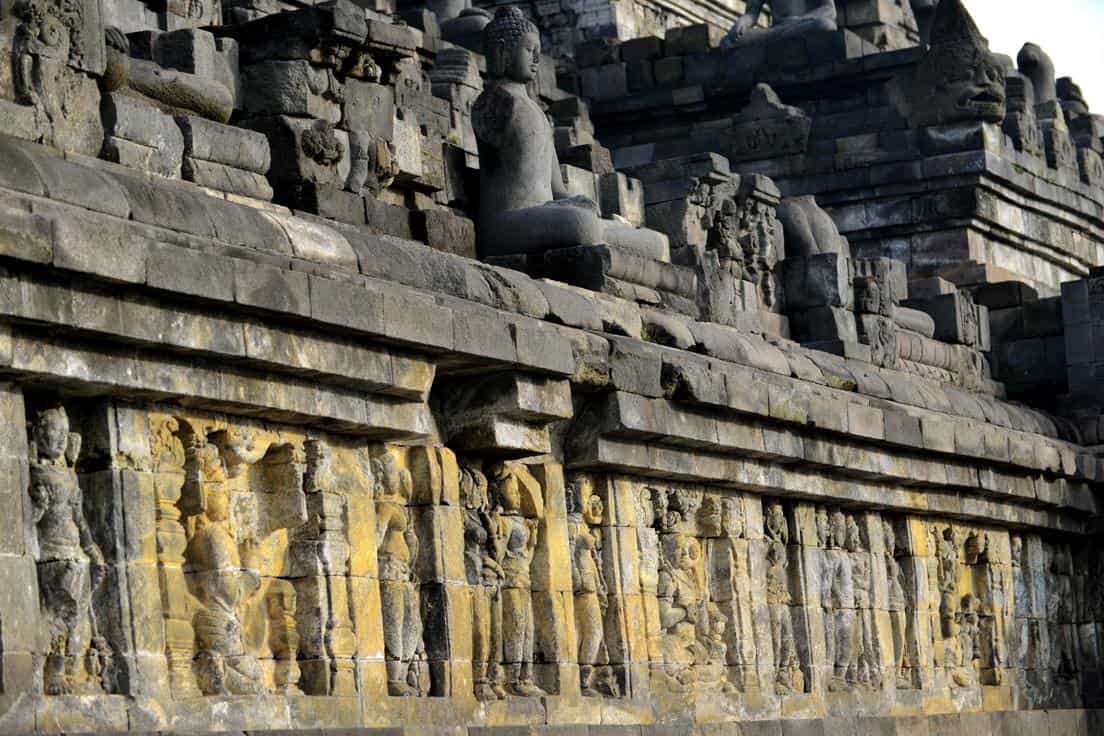
Buddhist relief and sculptures decorating every part of the temple
photography by: Shozeb Haider

A Buddhist relief in Borobudur
photography by: Shozeb Haider
The overall design of the complex is in the form of a mandala that captures the Buddhist view of the cosmos in one and a half million blocks of stone. Five square graduated terraces, each diminishing in size as they rise, one on top of the other, form the base of the pyramidal structure. On top of these lie three concentric circular terraces decorated with 72 perforated bell shaped stupas, each containing an imperfect statue of the Buddha. The tip of the pyramid is crowned by a main central stupa. Flights of stairs connect the terraces in each cardinal direction. The walls are decorated with 2672 sculptured relief panels, and 504 statues of Buddha. The terraces of the lower levels are enclosed by high narrow walls. The reliefs mainly depict desire as illusions, disappointments, and the shortcomings of ordinary life, as well as punishments of adulterers, murderers and thieves. The narration changes as one climbs to higher levels. The life of the Buddha is sculpted in stone as he negotiated this imperfect world, moving from his princely birth and wealth towards enlightenment.
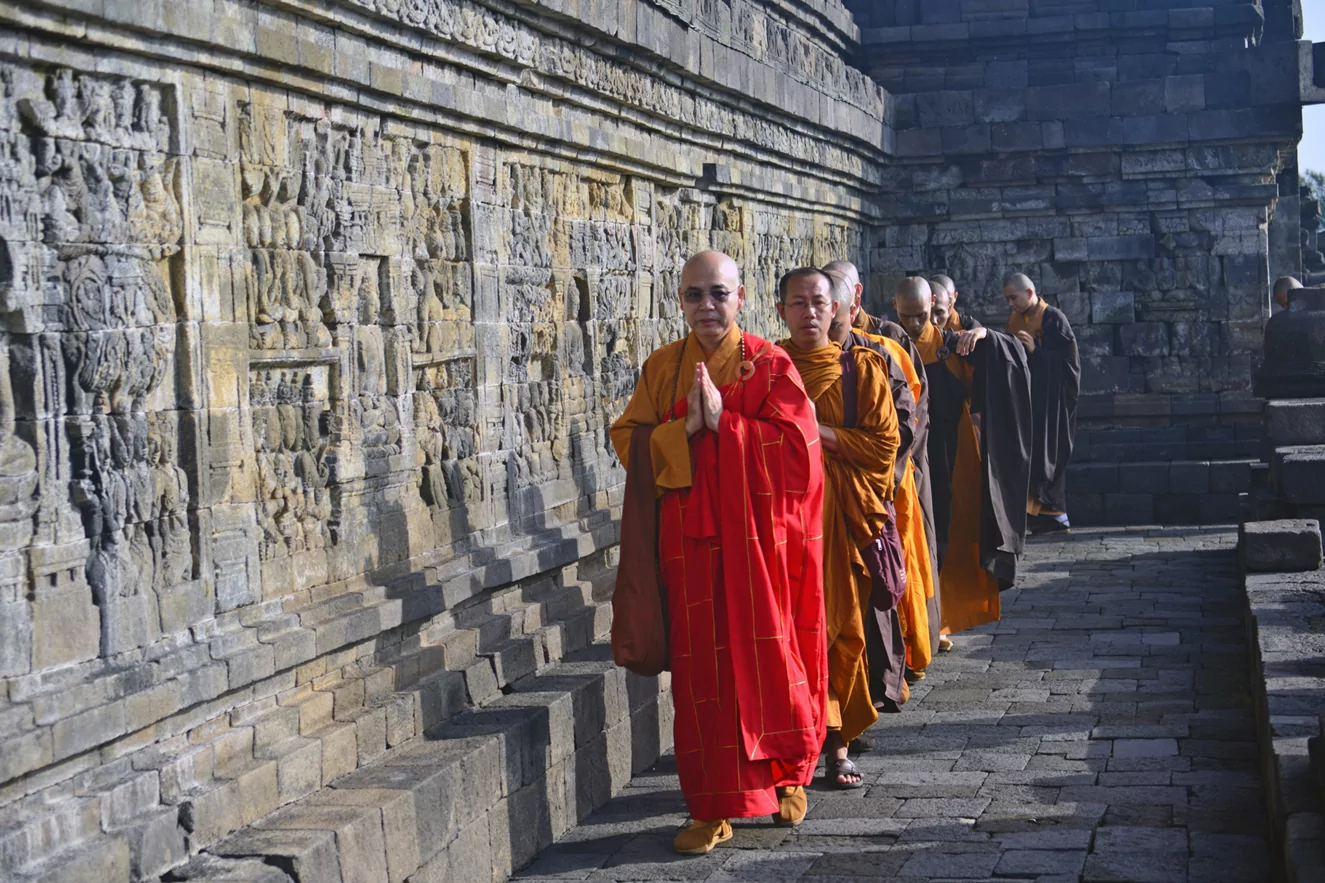
Monks marching in Borobudur Temple
photography by: Shozeb Haider
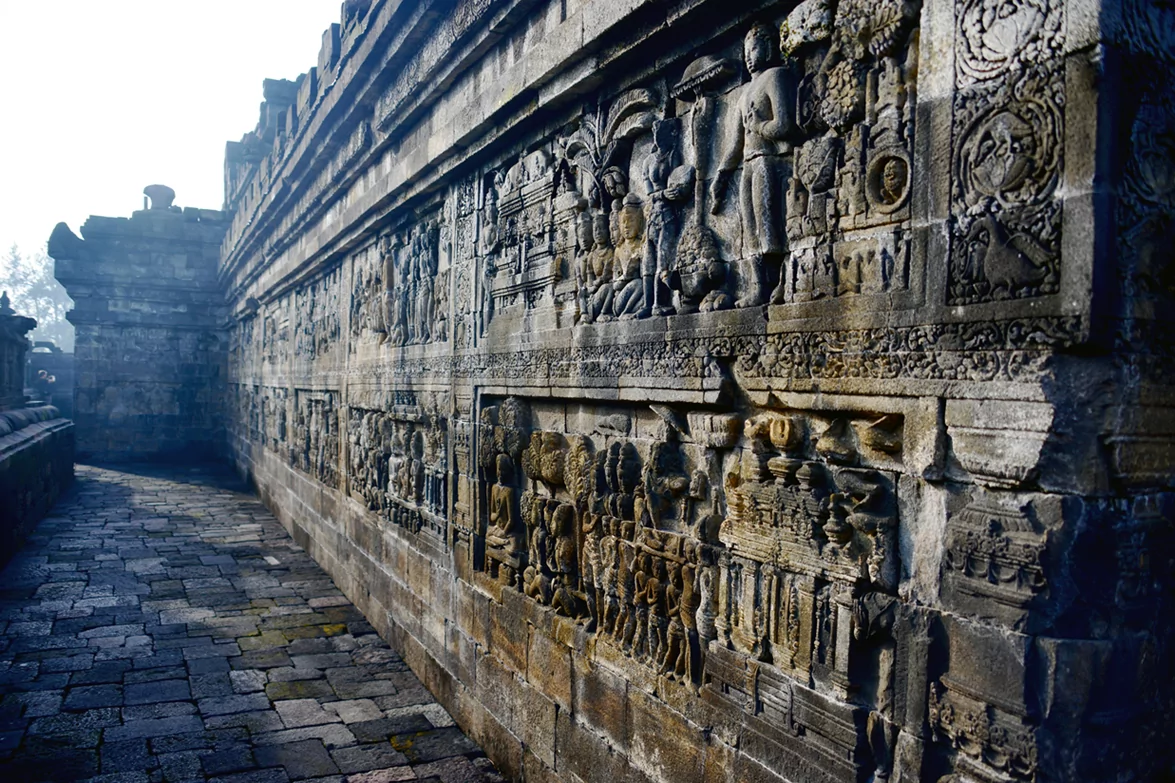
A breathtaking Buddhist relief in Borobudur
photography by: Shozeb Haider
As the pilgrim emerges from the enclosed corridors of the lower terraces, into the open spaces on the upper level, there are no more physical constraints on entering a more spacious reality. On the top circular terraces the overt teaching ends. There are no reliefs but only meditating statues of Buddha sitting inside perforated stupas, perhaps symbolizing the renunciation of the illusionary world of forms and representational reality, and a move into the realm of formless and emptiness. The large bell shaped stupa at the summit of the complex is empty, representing formlessness, which is the ultimate achievement of this spiritual journey. The builders of Borobudur understood perfectly how to shape thought in stone.
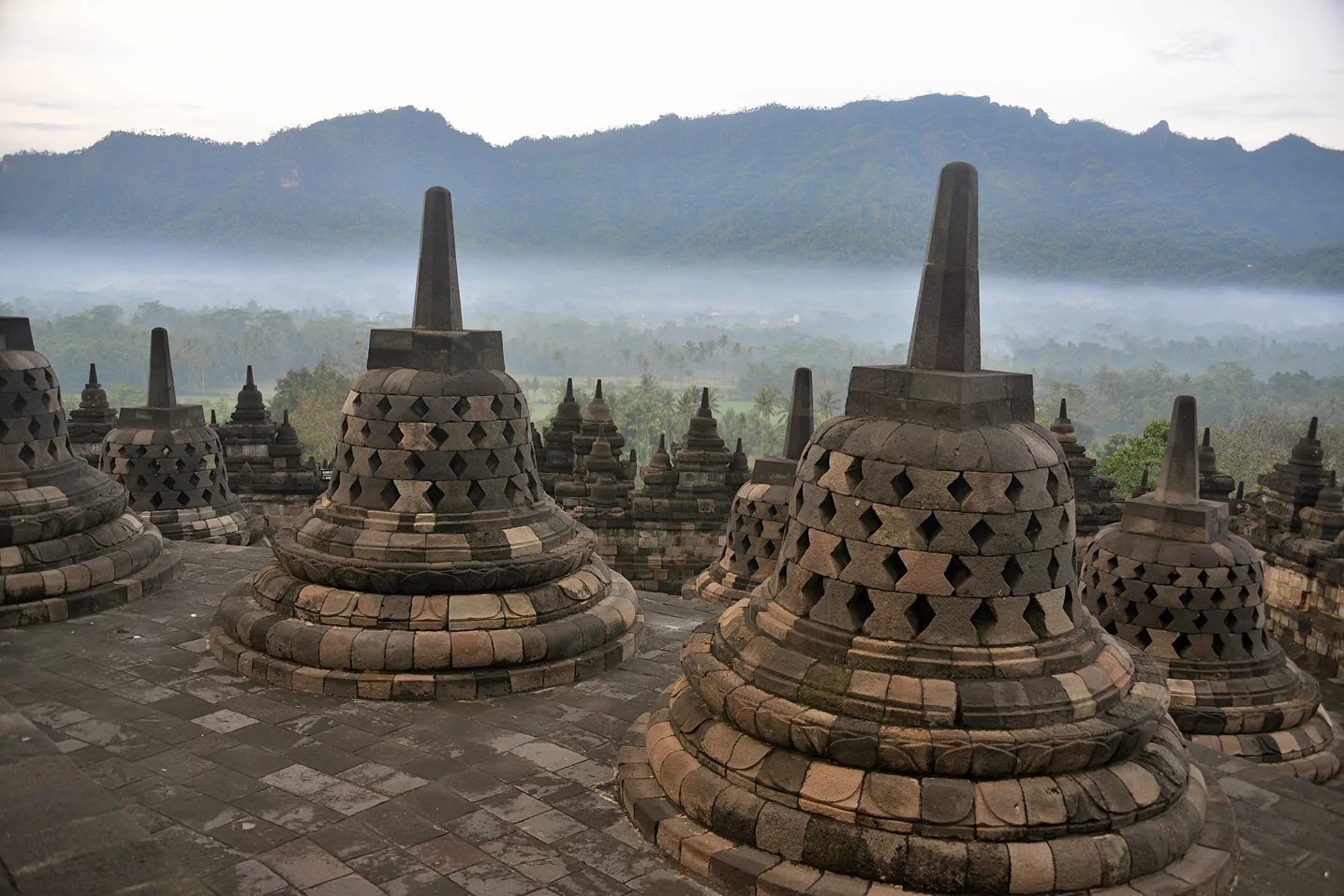
Borobudur’s myriads of stupas
photography by: Shozeb Haider

A Buddha statue on the backdrop of Borobudur’s stupas
photography by: Shozeb Haider
A large altar is temporarily erected in the grounds of the complex, on which sits a golden statue of Buddha. The procession ends here, with the relics transferred from the float to the stage. The candles are lit, and the monks assemble at the altar. As the soft light of a full moon shines over Borobudur, the monks begin their meditation, followed by holy chanting and praying. The final ritual of the festival is the thrice repeated, clockwise circumambulation of the monument, which culminates in the spectacular release of one thousand lighted lanterns into the sky, symbolizing the illumination of enlightenment. However, this year it had to be cancelled due to heavy rains, which started towards the end of the ceremony. Disappointing, but then Borobudur was built to teach that one should be able to overcome all such worldly expectations.

The stupas during sunset
photography by: Shozeb Haider
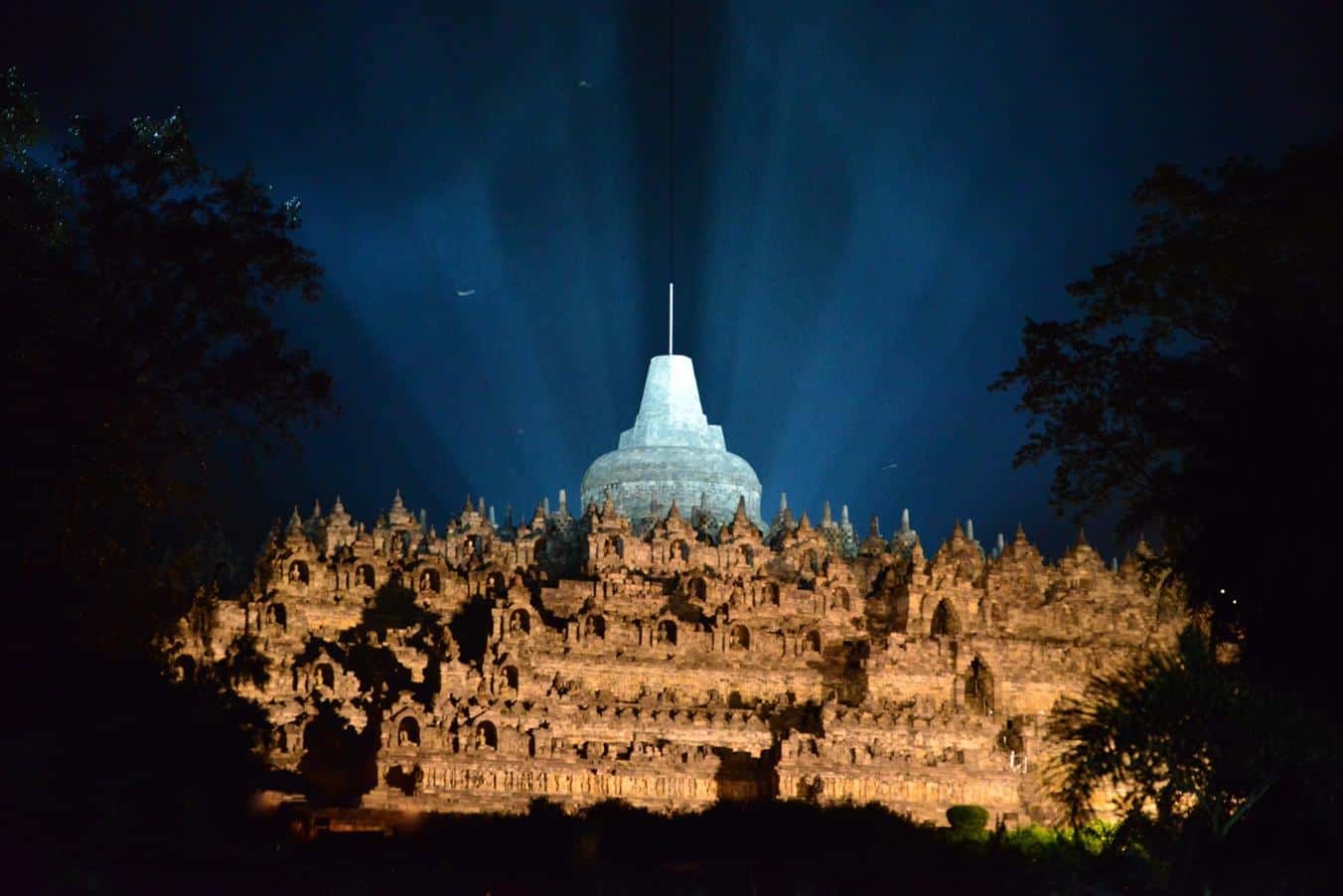
The temple’s spectacular night-time illumination
photography by: Shozeb Haider
Shozeb Haider is a professor of computational biophysics at University College London. While not researching ways to find new drugs, he is travelling around the world, to lesser known places. He firmly believes in the saying -“Don’t tell me how educated you are, tell me how much you have travelled instead”.
Check out my Instagram for more intriguing content.

photography by: Shozeb Haider